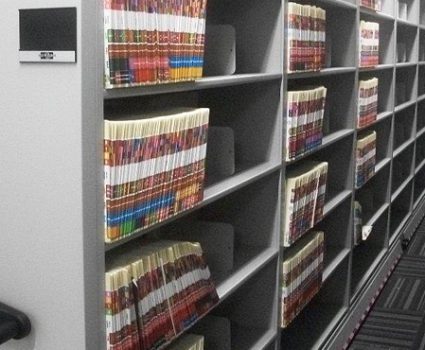
How Environmentally Friendly is your Records Management Program?
Your organization’s records management practices and choice of equipment and supplies all profoundly affect its overall impact on the environment.
Answering the questions in our 3-part needs assessment will help you determine how environmentally friendly your records management program is, and help put your organization on the path to fully realizing the business benefits of going green.
This first post explores being eco-conscious with life-cycle practices. In subsequent posts, we’ll shed some light on how an organization’s filing equipment and supplies, as well as information management services, can be managed with the environment in mind.
Why Bother?
Today’s businesses operate in a world that places increasing importance on protecting the environment. Any business that consumes resources or occupies physical space has an environmental footprint, and there is direct business benefits associated with minimizing that footprint. They include:
- Decreased risk of non-compliance with emerging regulatory requirements in the area of environmental protection.
- Cost savings as a result of more efficient use of expensive resources.
- Increased consumer and shareholder confidence as a result of more long-term sustainability.
These questions will help guide decisions and stimulate focused conversations about the environmental impact of your organization’s RM program.
8 Questions to Ask
1. Does your organization have a policy authorizing or requiring employees to dispose of non-record material when it is no longer useful? Examples of non-records include duplicate copies, most draft documents, outdated reference materials and blank forms.
2. How often does your organization conduct clean-up days to identify and purge non-record material that is no longer useful?
- Quarterly
- Semi-annually
- Annually
- At the end of major projects / initiatives
- Not at all
3. Has your organization developed a records retention schedule which authorizes disposal of different categories of records, subject to the expiry of standard time periods? If so, was it developed based on documented research of all legal and operational requirements for keeping records?
4. Has your organization implemented records retention schedules by regularly identifying and disposing of records whose retention periods have lapsed?
5. Do your work teams minimize duplicate copies and control document versions? Check which of the following best describes your teams’ practices:
- We use centralized filing systems with all relevant documents populating a single file.
- We use document management software tools which track and control changes to a single master document that is accessible to all team members who need it.
- We have multiple copies, drafts and versions of the same document stored across individual offices and electronic repositories.
6. What steps has your organization taken to encourage personnel to create and retain records in electronic format and actively discourage then from creating paper copies?
7. Has your organization implemented an electronic document management system that allows you to replace multiple paper copies with one version-controlled electronic document?
8. Would your organization benefit from electronic document imaging and transmission options as an alternative to physically transporting paper documents across different geographical locations?
At TAB, our long-standing experience in helping companies make more environmentally-friendly decisions when choosing filing supplies and equipment has taught us that every situation is unique. For a complete assessment of your program, please contact your TAB representative for the latest information on our offerings and sample consultation scenarios.
Next Steps
- Download the complete Environmental Self-Assessment Tool.
- Check out our Tips for a Green RM Program Whitepaper.
- Learn how tabZEROfile can help you reduce your organization’s environmental footprint.
- Talk to a TAB representative about how we can help you green your records management.





